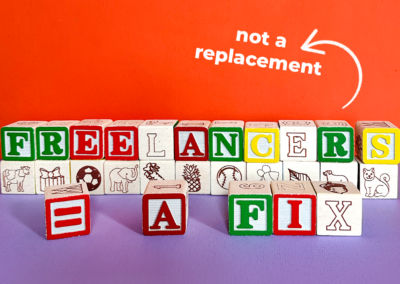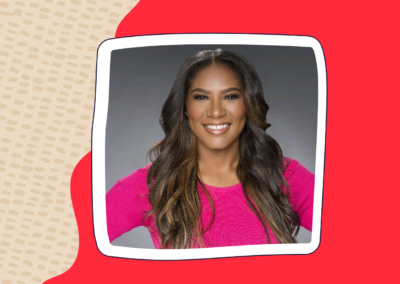As leaders continue to evaluate their benefit offerings and culture changes post-pandemic, it’s important to take mental health into consideration. You may feel that you already have adequate programs in place, but what about for families caring for a child with a mental illness? According to Mental Health America, the highest increases in mental health struggles in 2020 were youth between the ages of 11-17. With the combined impact of parents returning to the workplace and kids returning to school, experts predict that this number will continue to increase. Addressing these changes with an already challenging mental health care system, employers will see impacts across their business.
According to the National Alliance of Mental Illness (NAMI), of the 60+ million Americans that suffer from a mental illness, nearly half remain untreated. Accessing mental health care is far more challenging than physical health care.
Studies show a steady decline in mental health care providers with increased shortages expected over the coming years. In addition, finding a provider that will take on serious mental illnesses can be challenging. Factors such as age and neurodiversity can make finding the appropriate healthcare professional even more complicated. My family and I had to experience this firsthand.
Right around the time my daughter became ill, she was finishing up her senior year in high school. My partner is an airline pilot, making me the primary caregiver for our children. As an executive leader, my team and I were on the heels of a reduction in force and a departmental restructuring that involved combining three departments into one. Needless to say, I was faced with a lot of challenges while trying to help my daughter. I would research doctors and medications once everyone was in bed. I tried to keep our home life as stable as possible. I showed up to work every day, but was highly distracted. I was doing it all. Not well, mind you, but I was doing it.
My daughter was ultimately diagnosed with schizophrenia. In addition to the frightening symptoms of psychosis, she developed an eating disorder — food avoidance. I would start my day early to balance the departmental duties I was still responsible for, and then shift gears to hand feed her and sit with her to ensure she kept the food in her mouth. Once we were past the time period of concern, she would go into her room. I would then have time to attend my 1:1 calls with my team, department calls, and leadership calls. The majority of my day was spent on the phone, which also created a challenge.
My goal each day was simply to keep her alive. Eating, drinking, taking her medication, and being safe in her room.
Many of those at work were not aware of what I was going through. I didn’t want it to interfere with work or to be looked at differently. I felt I had to have this image of strength in order to lead through such a difficult professional and personal time period. I wasn’t able to hide it. Feedback from my team came in with really difficult comments. One person stated that I didn’t seem human. They were not too far off. I wasn’t feeling anything in life for fear that it would all come crumbling down.
My daughter needed help, but so did I. After seeking it, I was diagnosed with multiple mental illnesses — PTSD, panic disorder, and major depressive disorder. It is very common for caregivers to also experience their own mental illnesses.
Within a year of trying to keep up with my workload, raise my children, and manage our illnesses, I hit burnout. I never took time off because that would have been unpaid, and a risk I couldn’t afford taking with the incurred expenses of her illness. Nearly a year to the day that my daughter became stable, I left my career and spent the next four months recovering, and finding appropriate resources.
However, we were unable to find care locally. We traveled close to three hours every week to monitor medication. Most hospitals no longer receive funds for psychiatric patients. Even during a mental health emergency, we were sent home after some typical tests were performed. Identifying an inpatient facility or outpatient program is also challenging, as many require a diagnosis or patients to be stable.
The 2008 Mental Health Parity and Addiction Equity Act requires that health care plans provide mental and physical health plans equally. So, why is there a challenge? There are not enough network providers within a geographic area, some no longer accept insurance plans, or not enough funding to allocate to mental health services. I started contacting inpatient facilities as her delusions and hallucinations became increasingly worse. I was told that I could bring her in for an evaluation, but that payment upfront was required. They did not accept insurance. I was so exhausted from trying to locate a provider that would take our insurance, that I stopped asking and paid out of pocket.
Unfortunately, our story isn’t so unique. The role of the caregiver is multi-layered. It involves managing the stress of trying to find help, continue working, caring for other family members in the household, and the consistent monitoring of the mentally ill family member. It can be crushing.
While these challenges do exist and can take a toll on the caregiver, support from employers can help reduce the stress and help the employee manage their challenges with a level of ease.
Destigmatizing mental health in the workplace
Although we’ve come a long way in destigmatizing mental illness when it comes to anxiety, depression, and other forms of mental illness there is still work to be done. Schizophrenia, bipolar disorders, drug addiction, and eating disorders still carry a stigma. This stigma may reduce the chances of parents being open with their team or leadership about what is happening at home. Creating a safe space for employees to share their challenges is important. When employees feel safe and comfortable, they are able to build personal connections with leaders, human resources, and co-workers. This supports them in not feeling alone in their mental health journey. It’s also valuable when leadership shows vulnerability with their own experiences, this helps to normalize the experiences people have and gives them permission to not feel ashamed or want to hide.
Paid mental health leave
Providing specific paid time off for mental health or caregiving similar to maternity and paternity leave is another benefit that would help parents navigate the mental health system. Going without a paycheck while paying thousands of dollars in mental health care is not an option for most. Scheduling appointments, driving them to the appointments, caring for them and the other members of your family is daunting and unsustainable. When explaining what it was like caring for my daughter, I sum it up with, “I kept her alive for 8 months,” and that is exactly what it felt like. If I had the option of paid leave for my daughter’s condition I would have been able to manage all of those things with less stress and worry.
Actively communicate which resources are available
Although many organizations now offer an Employee Assistance Program (EAP), I have found that many of my clients don’t realize EAP is an option. Continual communication on mental health resources and benefits is paramount in any organization. All employees should be provided full transparency about what resources they can access to assist them and their families. It is not enough to send one email, reminders are necessary. An easy solution for being consistent and transparent is to keep a reminder in your signature on internal emails, communications, and or newsletters.
Amending existing resources to include mental health care
The Family Medical Leave Act (FMLA) provides protection for employees to take unpaid time off to care for themselves or a seriously ill family member. There are limitations based on company size, hours worked, and time at the employer. There is also another limitation to FMLA and that is ensuring that you provide a culture where it is safe for employees to take this time off. It isn’t enough to share the availability of the law — it needs to be modeled and encouraged. Normalizing FMLA for something other than the birth of a child will help those that need to take it for other reasons. Fear of losing their position, projects, and any other work they contributed to the organization is a common fear for many women. They will opt out and try to do it all leaving them working through their own mental health issues and eventually burnout.
Lastly, offer courses, speakers, support groups and other ways of connecting the employees with support when it comes to mental illness. During the pandemic, hospitals openly admitted that they were not equipped to handle the surge of mental illness in youth. While reading this article in the New York Times, I immediately empathized with the experience. Families were being evaluated and released to care for their child on their own, just as my partner and I had. Having information on hand such as your local chapter of NAMI would be extremely helpful for employees.
These small and large shifts can be made to help support your employees at different stages of their life, and the lives of their families. While mental health challenges may begin internally, they make their way to all facets of life and become emotionally, physically, and financially taxing. Taking the stride towards supporting your employees as they work towards addressing, managing and improving their mental health, will enable them to become not only better versions of themselves, but stronger employees.
Sarah’s Socials: LinkedIn, Instagram
Editor’s Socials – Dominque Dajer: LinkedIn, Twitter, Instagram



